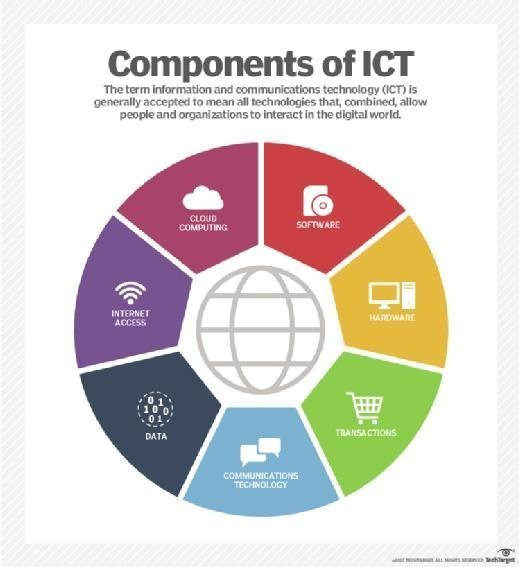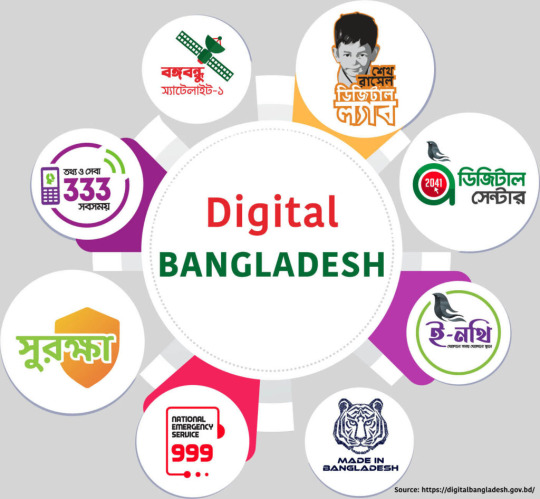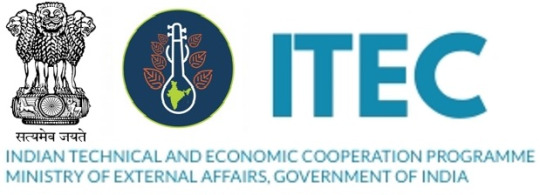#egovernment
Explore tagged Tumblr posts
Text
Digital Licenses: The Gateway to Smarter Cities in Canada?
Canada is embracing the future with its growing trend of digital transformation, and one of the key areas where this is most evident is in the realm of digital licenses. These licenses—whether for drivers, business owners, or professionals—are not just about reducing paperwork; they represent a significant step toward smarter, more efficient cities. Here’s how digital licenses are paving the way for Canada’s smart city revolution.

The Role of Digital Licenses in Smart Cities
A smart city leverages technology to improve the quality of life for its residents, enhance sustainability, and foster economic development. Digital licenses are a crucial part of this transition. By moving licenses from physical cards to digital forms, cities can streamline administrative tasks, reduce waste, and offer more efficient services to their populations.
One of the most common digital licenses already in use is the digital driver’s license. Provinces like Ontario, British Columbia, and Alberta are offering digital versions of driver’s licenses, accessible directly from a smartphone. These licenses are secure, encrypted, and often connected to other smart city systems, like traffic management or public safety platforms.
Efficiency and Accessibility
In a smart city, the efficiency of services is key. Digital licenses enable quick verification of identity and credentials, reducing the time people spend waiting in lines at government offices. This not only saves time for residents but also cuts down on operational costs for municipal governments.
Additionally, as the population becomes more mobile, especially with younger and tech-savvy generations, digital licenses offer unparalleled accessibility. Whether you’re renewing your driver’s license or applying for a permit, all can be done on a smartphone, allowing residents to manage their personal documentation without leaving home.
To stay on top of digital licensing requirements and ensure you are ready for the next step in digital transformation, licenseprep.ca provides resources on how digital licensing can impact residents and businesses alike.
Strengthening Public Safety and Security
A fundamental goal of smart cities is improving public safety, and digital licenses play a key role. With secure digital IDs, law enforcement agencies and city services can easily verify citizens' credentials, improving response times and reducing fraud. Furthermore, since these digital licenses often integrate with other smart infrastructure—such as vehicle registration systems or public transit—they enhance the efficiency of security operations.
Digital licenses can also reduce the risk of identity theft. Using encrypted, secure systems to store digital licenses minimizes the chances of lost or stolen physical cards, offering greater peace of mind for residents.
The Future of Digital Licenses in Canada
Looking forward, the potential for digital licenses in Canada’s smart cities is vast. Cities are experimenting with integrating digital licenses into public transportation systems, allowing citizens to use their driver’s license as a form of digital ticket. As electronic vehicle systems become more common, digital driver’s licenses could also be used to unlock cars or access parking spaces seamlessly.
For Canadians interested in how these innovations can impact their everyday lives, licenseprep.ca offers helpful tips on understanding the transition to digital licenses and staying ahead of regulatory changes.
#SmartCities#DigitalLicensing#FutureOfCities#CanadaTech#LicensePrep#SmartCityInnovation#DigitalDriverLicense#EGovernment#SecureLicenses#LicenseprepCanada
2 notes
·
View notes
Text
Neue Untersuchungen zur Digitalisierung der Verwaltung in Deutschland
Zwei aktuelle Studien zeigen interessante Entwicklungen auf, die auf eine steigende Dynamik hindeuten

Die gerade veröffentlichte Kurzstudie "Nächste Generation Führung“ in der Verwaltung basiert auf einer Befragung von 200 jungen Führungskräften unter 35 Jahren aus der Öffentlichen Verwaltung in Bund, Ländern und Kommunen. Die Stichprobe ist nicht repräsentativ. läßt aber zumindest einen deutlichen Trand erkennen: 82 % der befragten jungen Führungskräfte sieht Digitalisierung als zentrale Voraussetzung für eine moderne Verwaltung! Dabei planen und steuern nur 37 % ihre Projekte primär mithilfe digitaler Anwendungen, da die Voraussetzungen, wie digitale Tools, dafür nicht gegeben sind.[1] Die Lücke zeigt eindeutig, dass der Bedarf an Digitalisierung weiterhin enorm ist. Es ist zu vermuten, dass der Digitalisierungsdruck durch die jüngeren Führungskräfte und flexiblere Arbeitsmodelle auch innerhalb der Verwaltungen nocheinmal steigen wird. Die Erfahrung zeigt, dass insbesondere jüngere Mitarbeitende auf ggf. datenschutz- und sicherheitskritische, externe IT-Lösungen zurückgreifen, wenn von der Verwaltung keine geeigneten und nutzerfreundlichen Lösungen angeboten werden. Flexiblere Arbeitsmodelle (home Office, Mobile Office, Remote Work) in Verbindung mit modernen, weniger hierarchischen Führungsmodellen (War for Talents) und verstärkter Automatisierung (Fachkräftemangel) erhöhen den Druck. Als wäre das nicht genug, kommt auch weiterhin ein vielleicht noch größerer Erwartungsdruck an Digitalisierung von den Kunden der Verwaltungen, den Bürgern/innen, Unternehmen, Einrichtungen.
Die Kurzstudie wurde in diesem Jahr vom Research Bereich der Wegweiser GmbH durchgeführt, die auch den Zukunftskongress Staat & Verwaltung organisiert. Sie hat weitere Untersuchungen zur digitalen Entwicklung der Verwaltung im Portfolio, wie aktuell auch die Studie "Cloud und die digitale Zukunft der Verwaltung". Darin werden die aktuellen Strategien und Planungen auf Bundes-, Landes- und Kommunalebene untersucht. Dabei zeigt sich zumindest die bereitschaft, innovative Ansätze bei digitalen Lösungen zu verfolgen. So setzen mittlerweile immerhin mehr als die Hälfte der befragten Verwaltungen auch bei Fachverfahren - die technologisch sonst eher hinterherhinken - auf modernere Cloud-Lösungen. Auf der anderen Seite scheint die Bereitschaft, mit modernen, digitalen Lösungen auch die die Organisations- und Führungskultur zu modernisieren, sehr gering: Nur 15,75% geben an, dass Hierarchieabbau in ihrer Verwaltung priorisiert wird.[2]
Die steht der Erwartung der jüngeren Führungskräfte entgegen, von denen megr als die Hälfte einen Abbau hierachchischer Strukturen hin zu situativem und "Servant Leadership" fordern.[1]
Quelle: [1] https://www.vdz.org/leadership-organisation-arbeitskultur/wie-sieht-leadership-morgen-aus [2] https://www.zukunftskongress.de/de/cloud-studie
#e-government#egovernment#smartcountry#verwaltungsdigitalisierung#epublicsector#verwaltungsmodernisierung#bunddigital#kommunendigital#digitalisierung öffentlicher sektor#public sector digital#studien#daten#umfrage#fachverfahren#cloud#deutschland cloud
0 notes
Text
0 notes
Text
How TT is faring by regional internet standards
Above: Illustration by eamesBot/DepositPhotos BitDepth#1504 for March 31, 2024 The Internet Society (ISOC) updates its Pulse rankings of countries across a range of connectivity benchmarks. ISOC is an advocacy body that supports and promotes “The development of the internet as a global technical infrastructure, a resource to enrich people’s lives and a force for good in society.” In the 2024…
0 notes
Text
Agile E-Governance: Technology, Collaboration, and Employee Adaptation
A podcast of Dr Alex Zarifis research is available from @SotonBusiness AcademiaPod: Agile E-Governance: Technology, Collaboration, and Employee Adaptation https://www.youtube.com/watch?v=TWmkHUnt_Vs

1 note
·
View note
Photo

Transforming Dubai: Dr. Saeed Al Dhaheri on E-Government Innovations
0 notes
Text
Navigating the Future of Digital Public Services

Navigating the Future of Digital Public Services" explores the dynamic landscape of digital innovation in public sector services. As technology evolves, public services must adapt to meet the needs of modern citizens efficiently and securely. This comprehensive guide examines the latest trends, challenges, and opportunities in the digital transformation of government services. Emphasising user-centric design, data security, and inclusivity, this journey prepares professionals to take charge of enhancing public service delivery. London School of Emerging Technology (LSET) Digital Public Services Course offers in-depth insights and practical skills to drive this transformation effectively.
Enrol @ https://lset.uk/ for admission.
0 notes
Text
Bahrain is on the cusp of a digital revolution! Discover how the island nation is transforming its telecom landscape and leading the Middle Eastern digital transformation race.
From 5G adoption to Smart Cities, uncover the exciting prospects in our latest blog
https://www.avisysservices.com/blog/telecom-in-bahrain-a-journey-towards-digital-transformation/
#telecom#digitaltransformation#SmartCities#5G#DigitalBahrain#TelecomTransformation#BahrainEconomicVision2030#EconomicVision2030#5GRevolution#BahrainTech#eGovernment#eHealth#eCommerce#eBanking#ICTBahrain#DigitalInfrastructure#TelecomGrowth#MiddleEastTech#FiberOptics#IoTDevelopment#Cybersecurity#DigitalEconomy#BahrainGDP#BahrainEconomy
0 notes
Text
E-Government 2023: Zwischen Murmeltieren und digitalen Abenteuern #9vor9
Heute haben wir uns bei #9vor9 einem Thema gewidmet, das so manchen Beamtenstempel zum Tanzen bringen könnte: Wir haben über E-Government Monitor 2023 der Initiative D21 gesprochen, den die Initiative D21. #EGovernment #Deutschland
Heute haben wir uns bei #9vor9 einem Thema gewidmet, das so manchen Beamtenstempel zum Tanzen bringen könnte: Wir haben über E-Government Monitor 2023 gesprochen, den die Initiative D21 und die der Technischen Universität München gerade veröffentlicht haben! In einem (hoffentlich auch) amüsanten Gespräch zwischen mir und dem immer gut gelaunten Lars wurden einige interessante Einsichten zur…

View On WordPress
0 notes
Text
License Renewals Go Fully Online: What Canadians Need to Know
In a significant stride towards digital transformation, several Canadian provinces have transitioned to fully online driver's license renewals. This move offers convenience, efficiency, and a more streamlined process for residents. Here's what you need to know about renewing your driver's license online in Canada.

The Shift to Digital Renewals
Previously, renewing a driver's license often required a visit to a ServiceOntario or registry office. Now, many provinces have introduced online platforms that allow residents to renew their licenses from the comfort of their homes.
For instance, in Ontario, eligible drivers can renew their full Class G or M licenses online through the ServiceOntario website. Similarly, Alberta offers online renewals for Class 3, 5, 6, and 7 licenses via the Alberta.ca portal. These digital services aim to reduce wait times and make the renewal process more accessible.
Eligibility Criteria
While online renewals are convenient, not everyone is eligible. Common requirements include:
Valid License: Your current license should be valid and not expired for an extended period.
No Outstanding Fines: Ensure all traffic fines or penalties are settled.
Medical Status: Some provinces may require a medical examination report, especially for drivers over a certain age.
Address Consistency: Your address on file should match the one in your online account.
It's essential to check your province's specific requirements before initiating the renewal process.
The Renewal Process
The online renewal process is typically straightforward:
Access the Official Portal: Navigate to your province's official driver's license renewal website.
Log In: Use your credentials or create an account if you don't have one.
Enter License Details: Provide necessary information, including your license number and personal details.
Payment: Pay the renewal fee using accepted payment methods.
Confirmation: Upon successful renewal, you'll receive a temporary digital license, and your new physical license will be mailed to you.
For detailed guidance on the renewal process, licenseprep.ca offers comprehensive resources tailored to each province.
Benefits of Online Renewals
Convenience: Renew your license anytime, anywhere, without the need to visit an office.
Time-Saving: Eliminate long wait times and streamline the renewal process.
Accessibility: Access services from the comfort of your home, especially beneficial for those in remote areas.
Stay Informed
To ensure you don't miss your renewal date, consider setting reminders or subscribing to your province's notification services. Staying informed about the renewal process and requirements can help you avoid unnecessary complications.
#DigitalLicensing#OnlineRenewal#CanadaTech#LicensePrep#SmartLicensing#EGovernment#DigitalTransformation#LicenseprepCanada#RenewOnline#ConvenienceMatters
2 notes
·
View notes
Photo

How E-Governance Is Changing Public Services: A Digital India Discover how E-Governance is revolutionizing public services in India through Digital India, enhancing transparency, speed, accessibility, citizen engagement. Read more #egovernance #whatisegovernance #egovernancesolutions #egovernanceinindia #
0 notes
Text
Gov't begins ID card rollout to ministry's civil servants
Sample eID (CNS): The Cayman Islands National ID Programme will begin a pilot rollout on Friday among government workers after Cabinet approved the relevant regulations. The Ministry of Social Development and Innovation (MSDI) and the eGov department will issue the first National ID cards to internal team members and key ministry personnel involved in the project. The first phase will focus on…
0 notes
Text
🌟𝐓𝐫𝐚𝐧𝐬𝐟𝐨𝐫𝐦 𝐆𝐨𝐯𝐞𝐫𝐧𝐚𝐧𝐜𝐞 𝐰𝐢𝐭𝐡 𝐃𝐢𝐠𝐢𝐭𝐚𝐥 𝐈𝐧𝐧𝐨𝐯𝐚𝐭𝐢𝐨𝐧! 🌟
📢 Say goodbye to outdated processes and hello to smarter, citizen-focused governance. At Jitnit Bytes LLP, we’re revolutionizing the way governments serve their people with cutting-edge E-Governance Services.
🔑 𝐖𝐡𝐚𝐭 𝐖𝐞 𝐎𝐟𝐟𝐞𝐫: ✅ Transparency and accountability for better trust. ✅ Seamless access to public services through smart digital platforms. ✅ Data-driven insights for impactful decision-making. ✅ Secure, efficient, and paperless systems.
💡 𝐖𝐡𝐲 𝐂𝐡𝐨𝐨𝐬𝐞 𝐔𝐬? From smart portals to AI-powered analytics, we provide tailored solutions that empower citizens and streamline administrative workflows. Let's make governance smarter, faster, and more efficient!
𝐂𝐨𝐧𝐭𝐚𝐜𝐭 𝐮𝐬 𝐍𝐨𝐰! 🌐 www.jitnitbytes.com 📞 +91-1762 491 009
1 note
·
View note
Text
Digital Seva Kendra Near Me | Jan Digital Kendra Kolhapur — Dotishstar
In today’s fast-paced world, having access to reliable digital services is essential for managing everyday tasks efficiently. If you’re searching for a “Digital Seva Kendra near me,” look no further than Jan Digital Kendra Kolhapur, operated by Dotishstar. Conveniently located in Kolhapur, this center offers a one-stop solution for all your digital needs.

Jan Digital Kendra Kolhapur stands out for its commitment to making digital services accessible and affordable for everyone in the region. Here’s what you can expect:
Wide Range of Services From government schemes and bill payments to PAN card applications and Aadhaar updates, our center provides a comprehensive suite of services to meet your needs.
Expert Assistance Our team is trained to assist you with any queries or procedures, ensuring a hassle-free experience for all.
Convenient Location Located in the heart of Kolhapur, Jan Digital Kendra is easy to reach and ready to serve you when you need us.
Affordable Solutions We believe in delivering quality services at reasonable rates, ensuring everyone can benefit from digital empowerment.
Finding us is simple! Just search for “Digital Seva Kendra near me” or visit Dotishstar’s Jan Digital Kendra Kolhapur directly. Our address is centrally located, ensuring you don’t have to travel far for expert digital services.
With Dotishstar’s Jan Digital Kendra Kolhapur, digital services are just around the corner. Whether you need assistance with official documents or want to access government schemes, we’re here to help. Embrace the convenience of digital services today!
visit our site: https://dotishstar.com/
#DigitalSevaKendra#DigitalIndia#Egovernance#TechForGood#Innovation#SocialImpact#EmpoweringCommunities#DigitalTransformation#OnlineServices#CitizenServices#KendraUpdates#CommunitySupport#DigitalLiteracy#GovernmentServices#TechSavvy#DigitalInclusion#AccessToServices#IndiaOnline#ConnectingPeople
0 notes
Text
Embracing E-Governance: A New Era of Transparency and Accessibility in Goa
Embracing E-Governance: A New Era of Transparency and Accessibility in Goa @neosciencehub #EGovernance #GoaOnline #health #education #publicsafety #neosciencehub
In recent years, the digital revolution has transformed the way citizens interact with their governments. In India, the drive towards e-governance has gained immense momentum, especially in states like Goa, where initiatives such as the “Goa Online” portal are revolutionizing public service delivery. This article examines the significance of e-governance in improving administrative transparency,…
0 notes
Text
Use of E-Governance to Empower Governance in Developing Nations through Indian Technology
In today’s fast-paced digital era, governance is evolving at lightning speed, especially in developing nations. At the heart of this transformation is India, a nation that’s not just embracing technology to enhance governance within its borders but is also extending this digital revolution across Asia and beyond. E-governance, where technology meets public administration, is becoming a game-changer, and India’s initiatives are lighting the way for developing nations around.
To start with the basics, E-governance isn’t just another tech buzzword; it’s the foundation of modern public administration. By integrating information and communication technology (ICT) into government processes, e-governance makes governmental services more efficient, transparent, and accessible. For developing nations often stuck in the web of bureaucracy and corruption, e-governance is a good mechanism for smooth functioning

India, with its vast and diverse population, has developed a robust e-governance framework that’s now being adapted and implemented by other developing countries. And why not? India’s commitment to sharing its technological expertise and resources is making a tangible difference in the way governance is executed globally.
India’s e-governance journey kicked off with the National e-Governance Plan (NeGP) in 2006, designed to make all government services accessible to citizens electronically. Fast forward to today, and the Digital India initiative stands as a testament to the country’s relentless push towards digital empowerment. Take the Aadhaar system, for example, the world’s largest biometric ID system or the Government e-Marketplace (GeM). These are not just systems, they're transformative tools that are redefining the relationship between the government and its citizens. But here’s where it gets even more interesting: India’s impact isn’t confined to its borders. Through various partnerships and agreements, India is exporting its e-governance mechanisms and ideas to developing nations, helping them build and strengthen their own governance frameworks.

India’s global role in promoting e-governance is backed by a series of strategic international collaborations. Take the India-Uganda Memorandum of Understanding (MoU) on e-Governance signed in 2018. Under this agreement, India is providing technical assistance to Uganda, helping East African nations develop and implement e-governance frameworks that could revolutionize their public administration.
And that’s not all. India has also partnered with countries like Rwanda and Bangladesh to deploy its e-governance solutions. In Rwanda, India’s Center of Excellence in Software Development & Training (CESDT) is at the forefront, offering e-governance training and solutions that are already enhancing the efficiency of the Rwandan government making it efficient and citizen friendly. Meanwhile, in Bangladesh, India’s support has been pivotal in the success of the ‘Digital Bangladesh’ initiative, driving significant improvements in both service delivery and citizen engagement.

India’s legal framework for e-governance is constantly evolving to keep pace with the country’s growing digital landscape. The Information Technology (IT) Act, 2000, laid the groundwork by recognizing electronic records and digital signatures making it easier for data entry at the same time enabling digital transactions and communications within government operations.
The Digital India initiative, launched in 2015, further accelerated e-governance by promoting digital infrastructure, enhancing digital literacy, and driving the delivery of services through digital channels. This initiative is setting a precedent for other developing countries, many of which are eager to replicate India’s success.
India’s contribution to e-governance in developing nations goes beyond just providing technology. It’s about capacity building, training, and sharing best practices. This holistic approach ensures that e-governance systems aren’t just implemented but are sustainable in the long run. Taking another example in account, the Indian Technical and Economic Cooperation (ITEC) program, it’s been instrumental in training government officials from developing nations in e-governance, enabling these countries to develop tailored e-governance frameworks that fit their unique contexts. Moreover, India’s use of open-source software in many of its e-governance solutions makes these technologies more accessible and customizable for other countries. This democratization of technology is crucial for empowering governance in nations with limited resources and providing them with a democratic framework.

From my perspective, India’s e-governance initiatives are a shining example of how technology can be harnessed for smooth governance. The true strength of e-governance lies in its ability to make governments more accountable, transparent, and responsive to the needs of their citizens. For developing nations, where these qualities can be in short supply, e-governance can spark profound and lasting change. What truly stands out to me is India’s willingness to share its successes with other nations making it easier for other nations to implement policies and avoiding the process of reconstructing it. This isn’t just technology transfer, it's about fostering a culture of good governance and empowering countries to take control of their own destinies at the same time providing citizens with a sovereign future. In a world where digital divides can deepen inequalities, India’s e-governance initiatives can help in the future.
The future of governance is undeniably digital, and India is almost at the forefront of this shift. As more developing nations embrace e-governance, we can expect to see significant improvements in public administration, citizen engagement, and overall governance. But this progress will depend on continued investment in digital infrastructure, training, and international collaboration. India’s e-governance journey is far from complete, and its role as a global leader in this field will only grow with the help of innovations like these. By continuing to share its experience and resources, India is not just empowering governance in developing nations but is also contributing to a more equitable and digitally connected world.
#tech#aiandtech#governance#egovernance#bangladesh#uganda#foreign policy#foreign aid#aid#sovereignty#conflict#inovation
0 notes